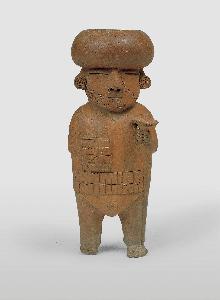Gallinazo
Gallinazo;Virú;Viru
Place: Virú Valley
Biography:
The Virú culture, also known as the Gallinazo culture, was a pre-Columbian culture that flourished in the Virú Valley on the northwest coast of Peru. It marks the start of the Early Intermediate Period of Peru, dating roughly around 200 BCE. The Virú Valley is on a coastal landscape which consists of a narrow land strip boarded by the Andes Mountains to its east and the Pacific Ocean to the west. The capital of the Virú valley during this time period was an urban area called the Gallinazo Group site. The Gallinazo group site was the primary center of the valley during this time and most likely the seat of regional leadership. The Early Intermediate period in Virú Culture was marked by import social (increase in population size), economic (increase in population size), and political (creations of a unified valley command) transformations. These include an increase in the overall number of settlements in the valley, the extension of the total area under cultivation, the construction of new irrigation canals, and the establishment of four-tiered administrative system. The Virú culture was known for its ceramic using negative painting technique. The culture existed until 600 CE.

